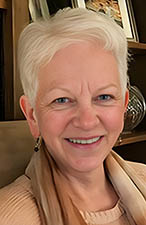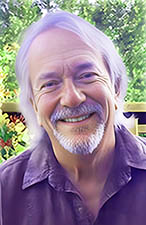
HOME • ASSISTED PUBLISHING • JOIN MAILING LIST

NEW FROM FEARLESS ASSISTED PUBLISHING:
What is it about those moments of breathtaking beauty within our lives that make them so elusive to description?
In this book, we shall argue that we know the answer. And it is this: such moments must defy description: were they not so resistant they’d fail their own birthing. Their nature stands apart from problem-solving. It is, instead and indeed, one of enigma. Breathtaking beauty, the sublime, is an experience of enigma.
And here we go further: the same is true of, lives at the heart of, the experience of loss — what we shall call essential, natural grief — sublime sadness. The sublime is as true of those moments of breathtaking beauty as it is of those at the very core of grief: they partake of a oneness. That is the argument we present.
We write descriptively to set contexts for an experience and a way to understand it, but our argument on its behalf cannot come to rest on those descriptive words however they’re formulated. The argument must evoke the feeling it’s addressing. And to do that we make use of the arts — just a tiny few of their many, many sublime fragments — literary, visual, and musical.



Robert Arnold Johnson • Susan Eileen Pickett • Mark G. Brown
We co-authors are friends. We share a lifelong passion for the arts. Two of us are psychotherapists, two of us are musicians, one is a physician of fifty years’ experience, and one taught music theory and history for decades. In an extended Introduction to the book, we describe how the theme for the argument we’ve just described came to our minds and from there became a topic for our conversations. We’ve put this book together by retaining each of us an individual voice, as if it were an extended conversation-of-monologues (if that’s not self-contradictory). In short, we’ve authored the book’s chapters individually, teaching ourselves, as we’ve done so, how to make use of a language for grief and the sublime, something we came to hold in common. For more information see thesublimesadness.com.
_________________________________
Published by Robert Arnold Johnson in collaboration with Fearless Literary
Full-color paperback • ISBN 979-8-218-67826-5 • 142 pages • $19.95 • ebook $9.95
ORDER NOW


print & Kindle editions___________________________________
P R E F A C E
by Paul Rotterdam
The sublime is a concept to denote the state of mind created by a phenomenon that exceeds the ordinary, akin to awe and wonder. Sublimity has been woven into philosophical dialectics at least since Platonic idealism, the working of souls in Plotinus, and most of all in the aesthetics of Burke and Immanuel Kant. The basic tenant of the Sublime is its absolute greatness: the infinite in nature, the elements of the divine in art, and the enigma of existence in a distant and sublime Universe. Kant notes that “nature is sublime in all appearances which arouse the idea of infinity,” which means that all singular appearances unite into a single intuition about the whole. Individual parts lose their name; perception focuses on totality and “creates an emotional state we call sublime.”
In the past two centuries the apperception of a work of art changed from the attention to individual elements and their narrative function into the contemplation of the entirety of the work in an uninterrupted intuition, uninterrupted because no rational thinking about individual elements intermingles in the emotional state of the mind (Geistesstimmung) when perceiving the totality of the work.
Who would expect that a painting, one that looks like a profane object hanging parallel to the wall, can have the aura of a mysterious icon? Who would expect that a piece of music, like Schubert’s String Quintet in C (1828), would make it impossible not to silently cry? Who would expect that a poem would change your position in the world by the revelation of an unexpected truth or an unexpected beauty of language? Who would have imagined that a novel would make you leave home forever in the middle of the night? Who would have expected that the loss of a parent or a dear friend would make you wonder about the enigma of existence and life thereafter?
Of course, it is not expected that one pin down the teleological conditions, let’s say, of a painting, the structure of a poem, or the physical circumstances of life which are responsible for feelings we connect with Sublimity. What is sublime can solely be located in the experiencing subject. Sublimity created by the loss of a person cannot be described but only intuited.
We spoke of the perception of a painting being the contemplation of totality rather than the interest in the meaning of singular forms. We also spoke of a sublime experience, a total experience. In The Enigma of Grief and the Sublime you will see it is applicable to circumstances of life, particularly to the loss of a person. “Natural grief” turns into extended “calm sadness,” an emotion that has infiltrated your whole being without justifying it with the imagination of past experiences. It is a state of being that is sublime in all its manifestations, ubiquitous in every mode of life, and only accessible to understanding when feeling it yourself.
C L I C K T O: HOME • ASSISTED PUBLISHING • JOIN MAILING LIST


